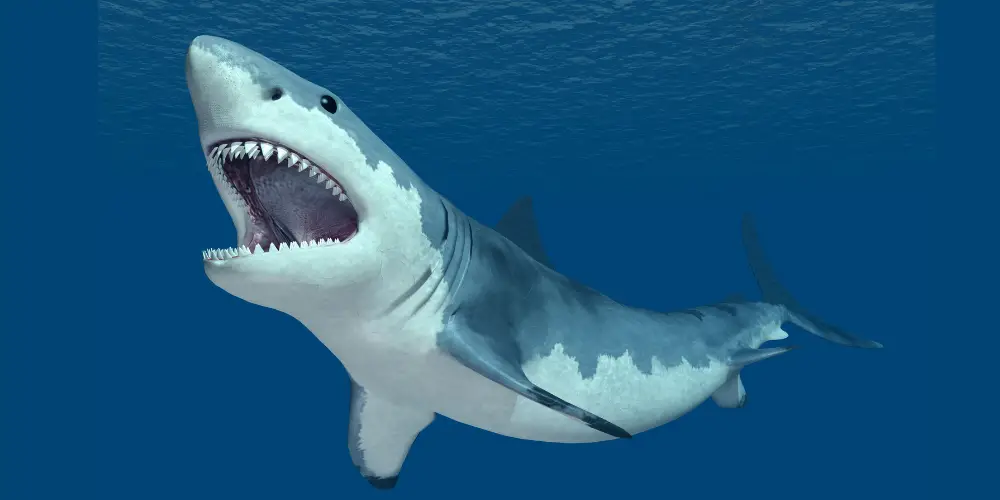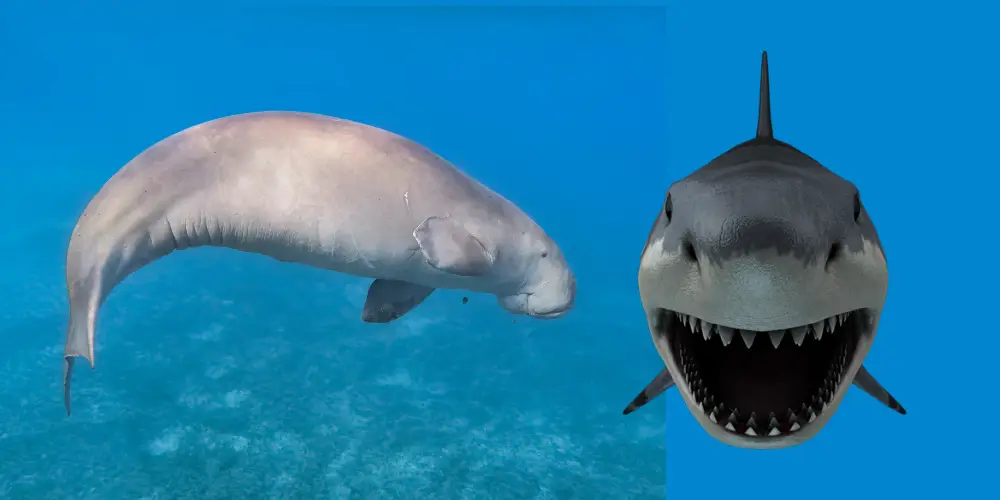Imagine the mighty silhouette of a shark, gliding effortlessly through the deep blue sea. Now, picture that same shark confined to the limited space of a tank.
This juxtaposition raises a compelling question that has sparked debates among marine biologists, aquarists, and animal rights activists: do sharks outgrow their tanks?
Sharks will outgrow small tanks, leading to stunted growth and potential health issues. The widely circulated claim that a shark in a fish tank will only grow to a limited size is false. Sharks can quickly outgrow small tanks. Proper tank design is essential to accommodate their potential size.
This article aims to unravel the complexities surrounding the growth of sharks in captivity, shedding light on the myths, the science, and the stark realities they face when removed from their natural habitats.
Key Takeaways
- Sharks have the potential to outgrow their tanks, contrary to popular belief.
- Proper tank size, water quality, diet, and stress management are crucial for the health of captive sharks.
- The ethics of keeping sharks in tanks is a contentious issue, with valid arguments on both sides.
- The financial and logistical requirements for housing sharks are substantial and should not be underestimated.
- Alternatives to keeping sharks in home aquariums include supporting conservation efforts and engaging in responsible wildlife tourism.
- Regulations on shark captivity vary, but responsible ownership is essential for the well-being of these animals.
Understanding Sharks: Species and Sizes

Sharks are a diverse group, with over 400 known species that vary dramatically in size and habitat preferences.
In captivity, the choice of species is critical, as size and growth potential can greatly influence their suitability for life in a tank. Here’s a closer look at some common captive species:
- Reef Sharks: Often found in home aquariums, these sharks are known for their adaptability but require significant space to thrive.
- Bamboo Sharks: They are more suitable for aquarium life due to their smaller size, but they still demand a carefully maintained environment to flourish.
Understanding the species-specific needs of these creatures is paramount for any aquarist considering the challenge of keeping a shark.
It’s not just about tank size; it’s about replicating an entire ecosystem to support the shark’s complex life cycle.
The Myth vs. Reality: Can Sharks Outgrow Their Tanks?
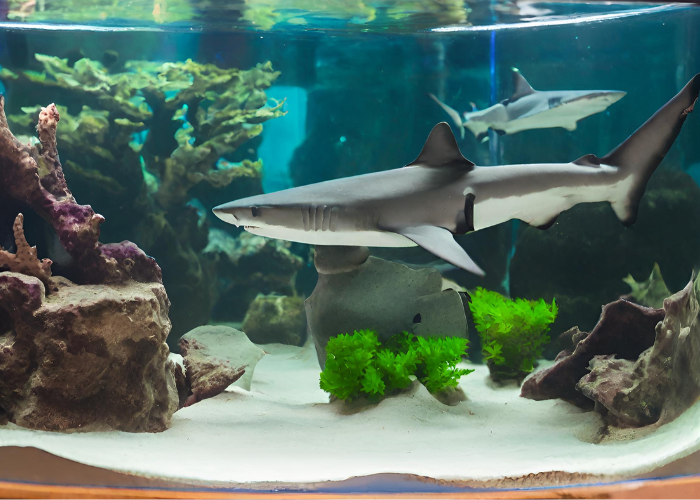
The myth that sharks will only grow as large as their tank allows has been perpetuated by anecdotal observations rather than scientific evidence.
In reality, sharks are genetically programmed to reach a specific size, and while environmental factors can influence their growth, they cannot adjust their size based on the tank dimensions. Here are the facts:
- Genetic Potential: Sharks possess a genetic blueprint that dictates their maximum size, which can be stunted but not changed by a small tank.
- Environmental Impact: Insufficient space can lead to physical and behavioral issues, including stunted growth, deformities, and increased aggression.
Acknowledging the distinction between myth and reality is essential for captive sharks’ health and welfare and the responsibilities of keeping such a species.
Factors Influencing Shark Growth in Captivity
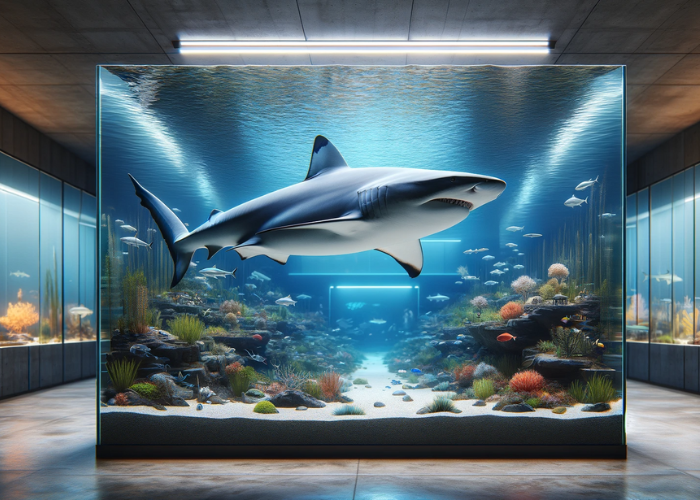
The growth of sharks in captivity is a multifaceted issue, influenced by numerous factors that must be meticulously managed. These include:
A. Tank Size
A tank that is too small can lead to a host of problems, including:
- Restricted movement causes stress and physical health issues.
- Inability to exhibit natural behaviors, which is crucial for psychological well-being.
B. Water Quality
Maintaining pristine water conditions is non-negotiable for the health of captive sharks. Key parameters to monitor include:
- pH levels: Must be kept within a species-specific range to prevent stress and disease.
- Salinity: Mimicking the natural salt concentration of a shark’s habitat is essential for osmoregulation.
- Temperature: Fluctuations in water temperature can harm a shark’s immune system.
C. Diet and Nutrition
A shark’s diet in captivity must be as close to their natural diet as possible to ensure proper growth and health:
- Protein-rich diet: Sharks require a protein-rich diet to support their muscular bodies.
- Vitamin supplementation: Certain vitamins naturally obtained in the wild may need to be supplemented in captivity.
D. Stress Factors
Stress is a significant inhibitor of growth and can be caused by various factors in a captive environment:
- Overcrowding and competition for resources can lead to chronic stress.
- Lack of environmental enrichment can result in boredom and frustration.
Aquarists can provide a more suitable environment supporting captive sharks’ well-being and natural growth patterns by understanding and controlling these factors.
The Ethical Debate: Is it Cruel to Keep Sharks in Tanks?
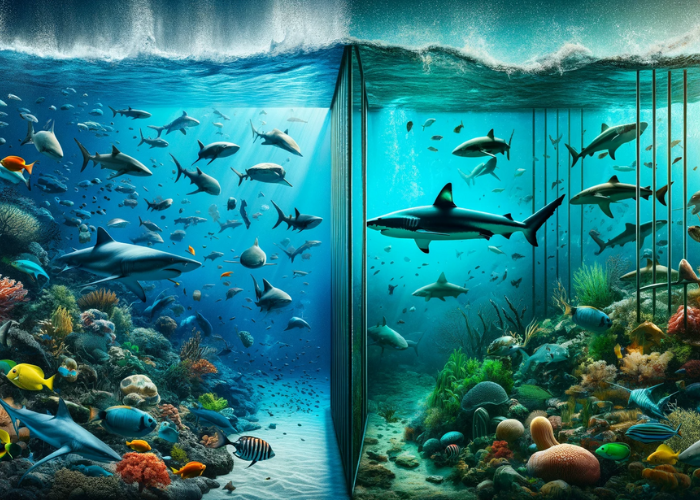
The ethics of keeping sharks in captivity is a topic that stirs passionate debate.
Some argue that public aquariums serve a vital role in education and conservation.
Others maintain that the practice is inherently cruel due to the complex needs of these large, roaming predators. Here are some considerations that fuel the debate:
- Natural Behavior: Sharks are built to swim vast distances, a natural behavior severely limited in the confines of a tank.
- Psychological Well-being: Confinement can lead to stereotypic behaviors, indicative of psychological distress.
- Conservation vs. Welfare: While some captive sharks can contribute to breeding and conservation programs, the welfare of individual sharks can be compromised.
The decision to house sharks in captivity should not be taken lightly. It requires a balance between the potential educational benefits and the moral responsibility to ensure the well-being of these magnificent creatures.
The Logistics of Housing Sharks

The practicalities of keeping sharks in captivity are not for the faint-hearted. Prospective shark owners must consider the following:
- Space: Sharks need ample room to move and grow, which means large tanks with thousands of gallons of water.
- Cost: The expenses associated with setting up and maintaining a shark tank — including filtration systems, water conditioners, and food — can be staggering.
- Care: Sharks demand expert care, from precise feeding to regular tank maintenance. This includes:
- Regular Feeding: Sharks have specific dietary needs that must be met with the right type and quantity of food.
- Tank Maintenance: Keeping the tank clean and the water quality high is an ongoing commitment.
- Health Monitoring: Regular check-ups by a veterinarian with expertise in marine life are essential to catch and treat any potential health issues early.
Understanding these requirements is crucial for anyone considering the significant commitment of keeping a shark in captivity.
Case Studies: Sharks in Public and Private Aquariums

Real-world examples shine a light on the successes and challenges of shark captivity. Here are a few case studies:
- Georgia Aquarium’s Whale Sharks: The Georgia Aquarium has successfully housed Whale Sharks, the largest fish species, in a massive tank. They have provided these giants with a habitat for proper growth and movement, showcasing what can be achieved with adequate resources.
- Private Aquarium Predicaments: Private aquarists often underestimate the growth and needs of their sharks, leading to situations where the animals outgrow their tanks and suffer as a result. These cases emphasize the need for careful planning and foresight when keeping sharks.
These case studies serve as a testament to the varying degrees of success in shark captivity and underscore the importance of understanding the full scope of what is required to provide these animals adequately.
Alternatives to Keeping Sharks in Home Aquariums
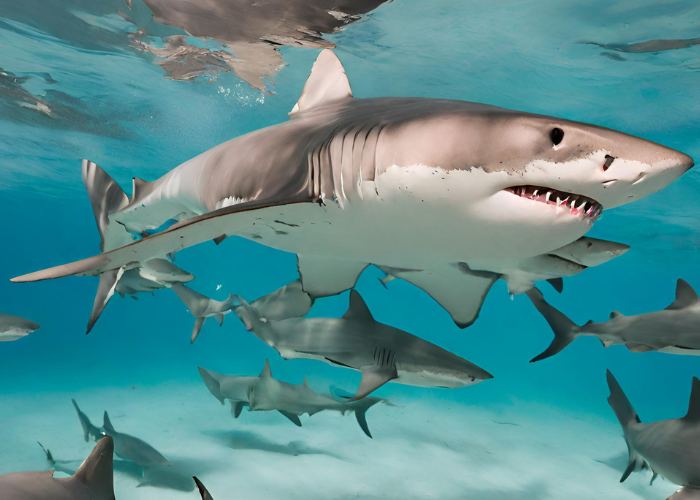
For those who are captivated by sharks but unable or unwilling to meet the demands of keeping them in captivity, several alternatives can be equally fulfilling:
- Supporting Shark Conservation: Contributing to organizations that protect sharks in their natural habitats is a meaningful way to make a difference.
- Visiting Public Aquariums: These institutions often provide adequate space and care for sharks, offering an opportunity to learn and observe without the responsibilities of ownership.
- Shark Eco-Tourism: Responsible tourism allows individuals to see sharks in their natural environment, supporting local economies and conservation efforts.
By choosing these alternatives, shark enthusiasts can enjoy these creatures without compromising their welfare.
Conclusion
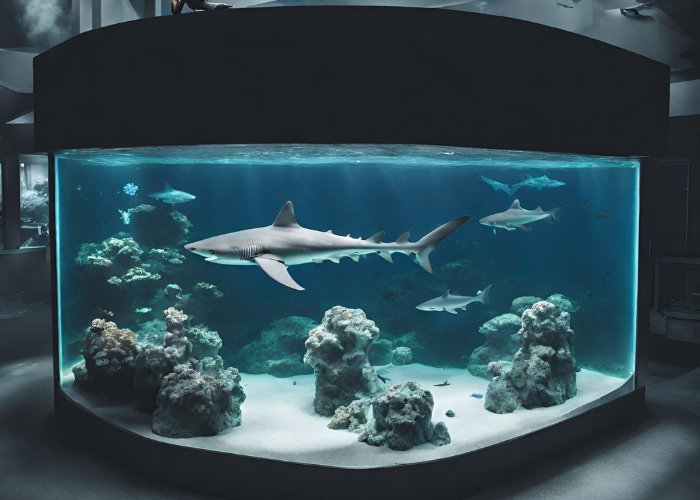
The nuanced question of whether sharks outgrow their tanks reveals a complex interplay between biological needs and ethical considerations.
While some sharks can adapt to life in a tank to a certain extent, many will suffer without the vast spaces they are accustomed to in the wild.
As responsible animal enthusiasts, we must weigh our desire to keep these creatures against their need for a natural, healthy life.
The debate over shark captivity is unlikely to be settled definitively. Still, the well-being of these animals must be at the forefront of any decision made regarding their care.
By approaching the issue with respect, responsibility, and a willingness to learn, we can ensure that our fascination with sharks does not come at the cost of their welfare.
Frequently Asked Questions

Addressing common questions can help dispel myths and provide clarity:
Q: What is the lifespan of a shark in captivity compared to the wild? A: Lifespans can vary greatly; some species may live longer in captivity due to the absence of predators and controlled conditions, while others may suffer from the stress of confinement, leading to a shortened lifespan.
Q: How can you tell if a shark is outgrowing its tank? A: Indicators include difficulty turning or maneuvering, signs of agitation or aggression, and physical marks such as scrapes from the tank’s boundaries.
Q: Are there laws regulating the keeping of sharks in home aquariums? A: Many regions have specific regulations regarding the species allowed in captivity and the conditions that must be met, emphasizing the importance of researching and adhering to local laws.
By educating themselves, prospective and current shark owners can ensure they provide the best environment for their captive sharks.
Additional Resources and References
For those seeking to delve deeper into the topic of shark captivity, the following resources provide valuable information:
We invite you to share your perspectives on sharks in captivity. Your experiences, insights, and opinions can help foster a more informed and compassionate discussion.


